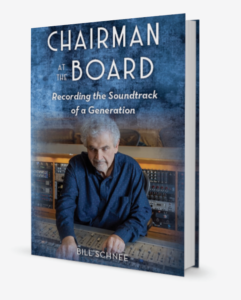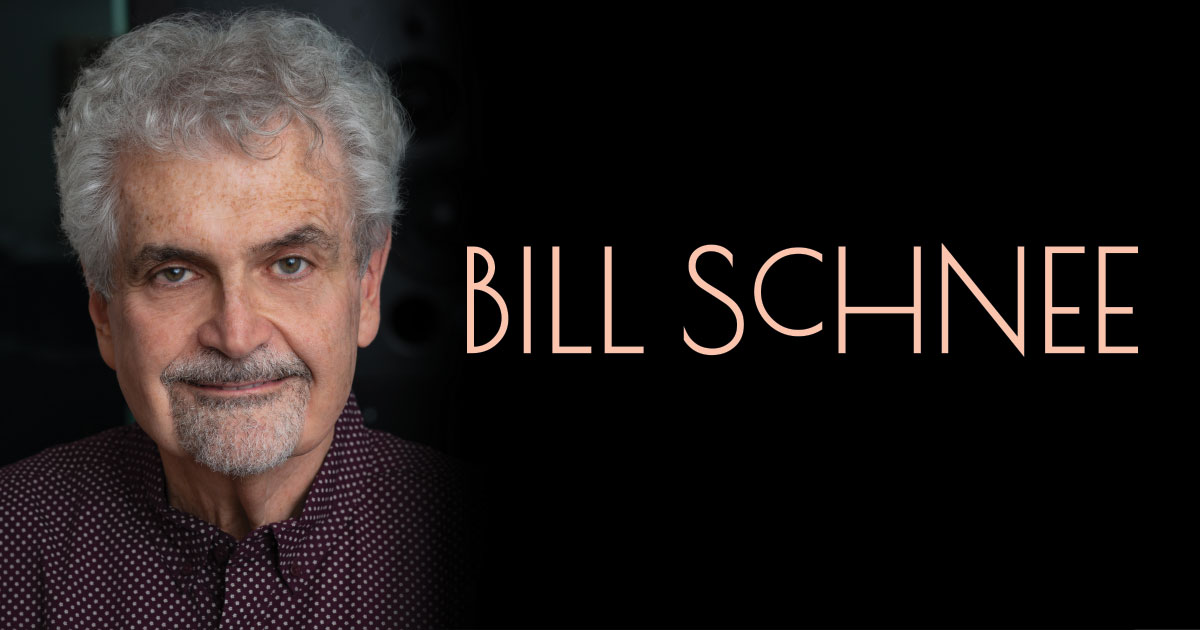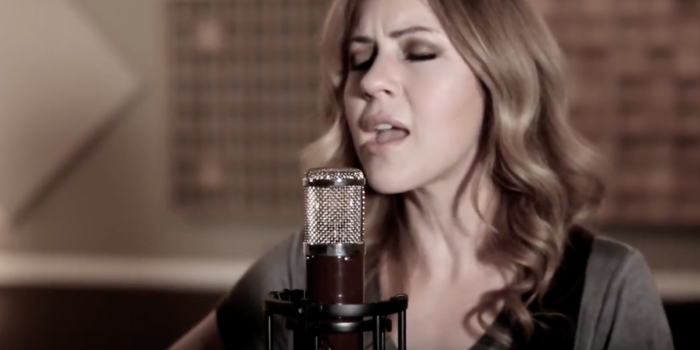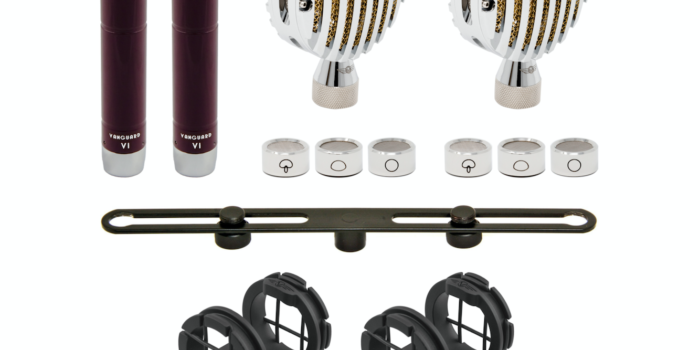If you’re reading this, engineer Bill Schnee probably doesn’t need any introduction. The work of his decades-spanning, genre-defining, award-winning career has probably tickled your eardrums hundreds – if not thousands – of times. An “engineer’s engineer”, Bill was actually instrumental in helping me confirm my suspicions about the V13 – that we had a darn good mic in the works!
We had the privilege of asking Bill a few questions this week, and he was gracious to give us some elaborate and detailed answers. You can read more about advice for new engineers, how he heard about Vanguard, and some of his favorite studio moments below. Be sure to check out his book “Chairman at the Board: Recording the Soundtrack of a Generation”, available at any bookseller for more amazing stories from his long and storied studio career.
In your 50+ year career you’ve engineered more than 600 records; your discography is staggering. And it’s not like a bunch of library music or something: 50 top twenty singles, 135 Gold and Platinum records, 11 personal Grammy noms for engineering, and two wins. The records, by and large, are iconic and era-defining with artists from almost every genre of popular music … from Barbra Streisand to Miles Davis, Carly Simon to Dire Straits, Rod Stewart to The Jacksons, Natalie Cole to Huey Lewis and the News, Ringo to Boz Scaggs, Whitney Houston, Neil Diamond, George Benson, Leo Sayer … and on and on!. Not to mention Steely Dan’s Aja, one of the greatest records of the “golden age”. That record changed how “pop” music was viewed by so-called “serious” music aficionados…the complex charts, Wayne Shorter’s solo, Donald and Walter channeling Monk and Mingus…
Q: I get that “it’s just work” , as Warhol used to say, but in the midst of it did you ever once stop and look around the studio with Whitney singing and the greatest session musicians on the planet playing their butts off and think, “Holy hell! This is amazing! How did I get here?!?”
Sure, but not as much as you’d think. The first was at the very beginning of my career when I found myself recording the amazing Barbra Streisand. But how about the “pinch me” three years later when I recorded three of the Beatles in the studio for Ringo’s album? That was the first – and last – time the three of them did so after the breakup. After that, I think Warhol’s theorem took hold. But as I was writing my book and recounting all the memories, now it kept hitting me over and over. I have truly had a blessed career.
Q: Last year you published your book “Chairman at the Board: Recording the Soundtrack of a Generation” (available anywhere you buy books). Tell us about the process of writing the book.
I’ve always loved telling stories, and in fact at one point even thought about becoming a film director. Over the years, when I’d start telling stories, people would say I should write a book. Finally a producer I was working with said some magic combination of words that pushed me over the edge, and I decided to do it. I started at the beginning with my high school band and our getting a record deal. After I got into it deeper, I did jump around a bit. It was a great trip down memory lane.

Art Deco title font is always a good call.
Q: You eventually opened your own room, Schnee Studio, in 1980. You and your crew built the console and designed the monitoring system as well, I assume. By 1980 not too many people were doing the custom console thing anymore, with SSL, Neve, MCI and Trident all offering comprehensive console systems. Why build your own?
I had learned a good bit about electronics from two of my mentors, and came to learn that in analog, less is more. That is to say, the less electronics the signal goes through, the more natural sound you get. I knew we could build an incredibly simple console that would sound better than anything we could buy, and I believe we did just that. Prior to building my studio, the best sounding console I had worked on was homemade, and again, very simple electronically. The studio was called Producer’s Workshop and it’s where I recorded the tracks for Aja.
Q: The tools of the trade and processes have changed a lot since you first hit the “Record” button in the late 60’s. How have the changes affected what you do? Working in the box, lots of editing capability, 100+ tracks… Is it still a good time?
I started on a 4 track 1/2 inch machine … yes, just four tracks. And now, as you point out, there can be over 100 tracks. I never bought a digital tape machine for the studio because I didn’t think they sounded as good as analog, not to mention there were three competing models that weren’t compatible with each other. But when I was producing the end title song for a Kevin Costner picture and ran into trouble, I called a friend in the film business that had a Pro Tools rig to come and bail me out. When I saw the production value of Pro Tools, I knew it was here to stay. I bought a system very soon thereafter. A lot has changed over the years, but music is still music for me, and so yes, I’m still having a blast.
I’ve never been a fan of 16-bit/44.1k digital compared to analog, but 96k and especially 192k digital can sound amazing. I’ve done everything I can to make digital sound as good as possible. I come out of Tools with 16 stems into a custom solid state D/A and 8 stems into a custom tube D/A and sum them analog.
I used to love editing or cutting tape, but editing on Pro Tools is even better. After all, there’s command+Z.
Q: You’ve been a great advocate for Vanguard Audio Labs, and we appreciate your support. How did you find us in the wide world of studio condenser microphones?
I’m always being asked to listen to some new piece of equipment, and very seldom do I oblige. But about seven or eight years ago, someone I’d never met (Vanguard co-founder Derek Bargaehr) called and asked if I would listen to a prototype of a large diaphragm tube microphone he was wanting to sell in the thousand dollar range. I can’t say why, but this time I said, “sure.” He dropped it off at my studio, where it sat for several weeks. When he finally called and asked what I thought, I realized I’d better give it a listen. Over the next several days, I compared it to several of my vintage tube favorites that were valued then between $10,000 to $25,000. I was quite shocked at how well the prototype compared to them! I gave him my glowing report, but warned that quality control would be of utmost importance to the brand. They had to make sure every mic sounded as good as that prototype did. Well, the company became Vanguard Audio Labs, and they indeed have kept the QC right up to par on what became the Vanguard V13. They recently did an upgrade to the gen2, and it sounds even a wee bit better.
People are always asking me for an affordable large diaphragm tube microphone, and without hesitation, I tell them about the Vanguard V13. Everyone I have recommended it to has bought it and loves it.
Q: What advice would you give to young engineers trying to get their careers in gear these days?
Of course everything changed with the DAW – giving “professional quality” recording at a price everyone can afford. As a result, there are more people trying to get through the professional music door than ever. There is no clear path to “making it” as there was when I started. So when I speak to the young people in recording or music schools, I tell them to take any and all opportunities that come along in music – not just ones on the path they think they want to go down. One thing might lead to another, or they may find the divergent path is even better suited for them.
Q: Tell us what you’re working on now?
My wife and I relocated to Nashville four years ago, and it’s been an incredible move for us. I’m fortunate that I’m in great health, and have all the passion for making music I had fifty years ago. Since moving here, I’ve done two of the best albums I’ve done in the last dozen years. One is by Mandy Barnett called Every Star Above, and it’s the torch songs from Billie Holliday’s last album. It was arranged by the great Sammy Nestico, and I recorded it all live with a 57 piece orchestra. The other is by Michael Feinstein called Gershwin Country. It’s a very unique album of Gershwin songs done as duets with country music stars as Michael’s duet partners. I’m just now finishing mixing the cast album for a play about Neil Diamond’s life that opened on Broadway December 4th, 2022. The play looks like a home run to me! And also almost ready for mastering is an old school R&B album by Charles “Wigg” Walker. I can’t get enough of this one, and I’m sad it’s almost over. But then … on to the next!





